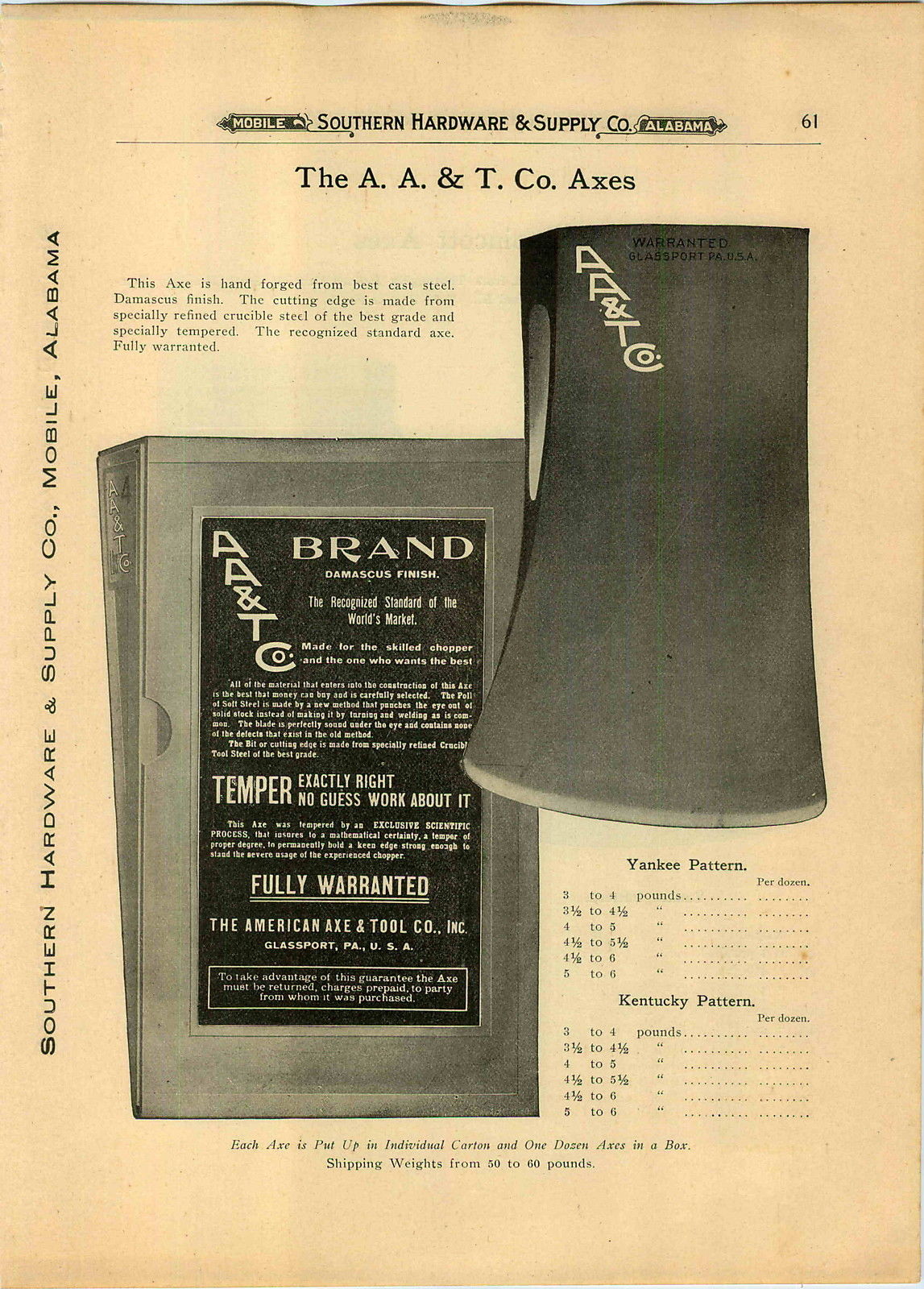- Joined
- Jun 1, 2017
- Messages
- 241
I love seeing those axes from American Axe & Tool Company that were not made in Glassport. In the case of my fireman’s axe (pictures below), it was made in the Knickerbacker factory in Ballston, NY (still using the I Blood stamp) and before they moved the equipment to Glassport (due to fire, big surprise).
One of the characteristics I find particularly interesting is the plant number stamp (as described at yesteryeartools). The axe below is stamped 12 (in circle), presumably the plant number for the Ballston, NY location. I wonder if it’s possible to generate a plant number list from samples.
Anyway, please, post pictures of non-Glassport A. A. & T. Co axes if you got 'em.




One of the characteristics I find particularly interesting is the plant number stamp (as described at yesteryeartools). The axe below is stamped 12 (in circle), presumably the plant number for the Ballston, NY location. I wonder if it’s possible to generate a plant number list from samples.
Anyway, please, post pictures of non-Glassport A. A. & T. Co axes if you got 'em.




Last edited:













![URL]]](/proxy.php?image=http%3A%2F%2F%5BURL%3D%27http%3A%2F%2Fi.imgur.com%2FFAbaZMH.jpg%255b%2Fimg%27%5Dhttp%3A%2F%2Fi.imgur.com%2FFAbaZMH.jpg%5B%2Fimg%5B%2FURL%5D%5D&hash=049bd5bc86a8bd798fd90065afa0133c)








